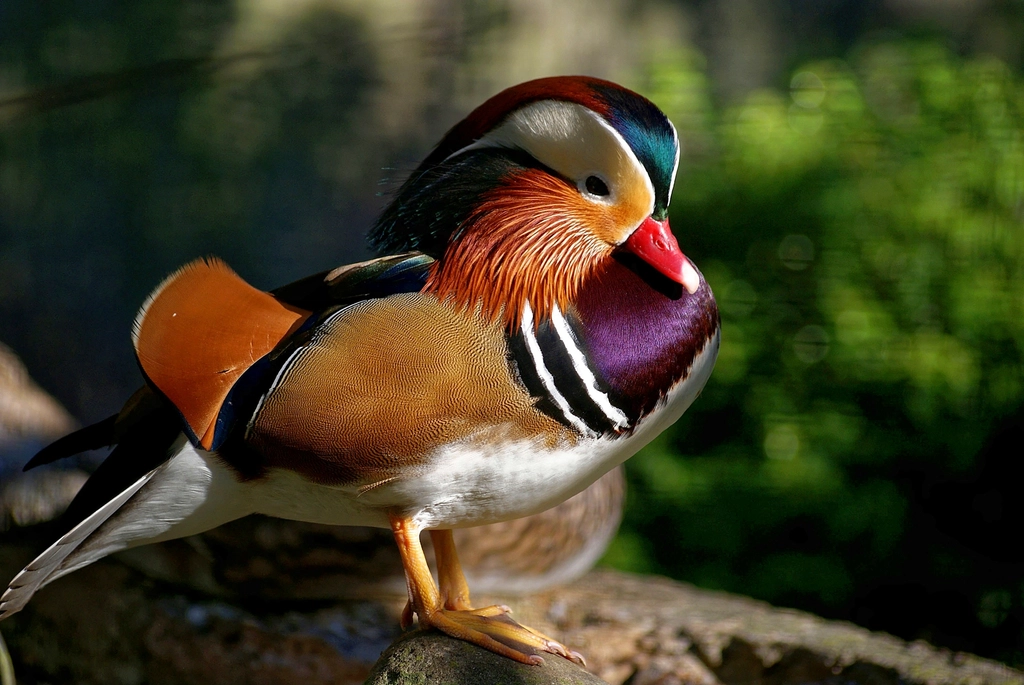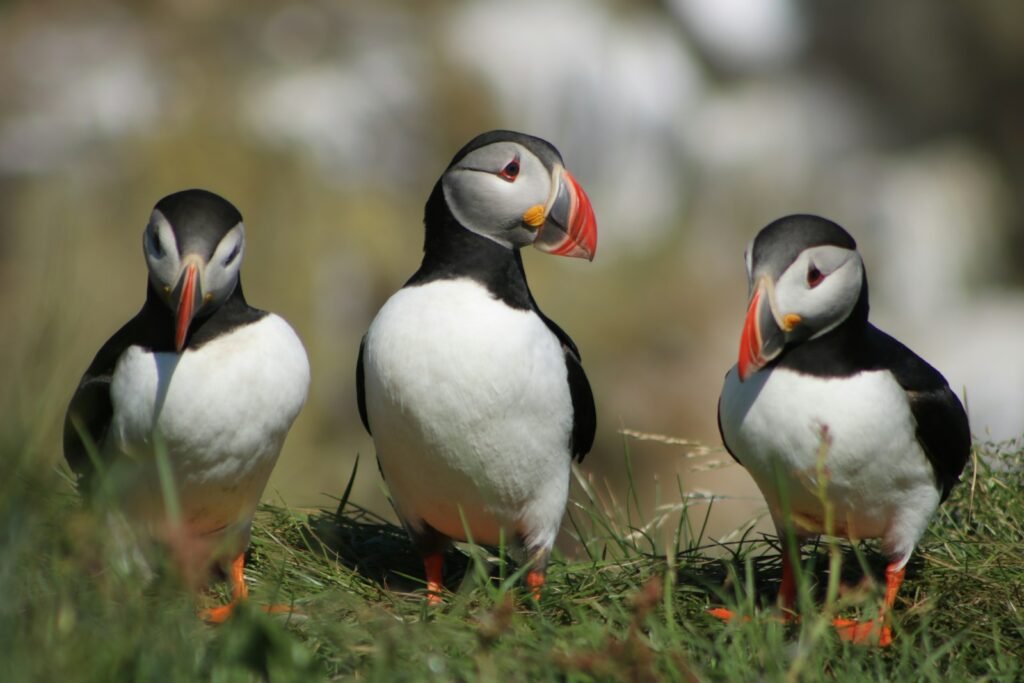Who would have thought that some of the most captivating creatures in the sky could also be the clowns of the avian world? Puffins, albatrosses, and turkeys may not be the most graceful flyers, but they certainly bring a smile to our faces with their amusing antics. These birds, with their unique flying styles and quirky behaviors, remind us of the delightful unpredictability of nature. So, what makes these birds so comically charming? Let’s dive into the whimsical world of these feathered jesters.
Puffins: The Clowns of the Sea
Puffins, with their vibrant beaks and endearing waddle, are often referred to as the clowns of the sea. These small seabirds are not only known for their colorful appearance but also for their somewhat awkward takeoffs and landings. Watching a puffin take off is akin to seeing a child stumble while learning to ride a bicycle. They flap their wings rapidly, almost desperately, before finally gaining enough momentum to lift off the water. Their flight is characterized by quick, fluttering wingbeats, which can appear frantic yet charming. Despite their clumsy start, puffins are skilled hunters, diving gracefully into the ocean to catch fish. Their duality of awkwardness and expertise makes them a delightful spectacle.
Albatrosses: The Masters of the Skies, On Occasion
Albatrosses are revered for their impressive wingspans and ability to glide effortlessly across vast oceanic expanses. However, when it comes to land, these majestic birds transform into something reminiscent of a slapstick comedy. Their long wings, perfect for soaring, become cumbersome as they attempt to navigate terrestrial terrain. Watching an albatross land is like witnessing a plane coming in too fast for the runway—there are often stumbles, slides, and a comical flapping of wings. Despite their clumsy terrestrial antics, albatrosses are remarkable navigators, using the wind to travel thousands of miles without flapping their wings. Their juxtaposition of elegance and awkwardness captivates bird enthusiasts worldwide.
Turkeys: The Grounded Flyers
Turkeys, often associated with festive dinners, are not typically celebrated for their flying prowess. In fact, their flight capabilities are often the subject of amusement. Wild turkeys can fly short distances, but their takeoffs are far from graceful. Imagine a large, heavy object suddenly propelled into the air with great effort—that’s a turkey taking flight. Their wings beat furiously, and their bodies appear to defy the laws of aerodynamics. Yet, once airborne, they can glide gracefully to the safety of tree branches, away from predators. Their awkward beginnings and surprising agility remind us of the unexpected talents hidden beneath seemingly ungainly exteriors.
The Science Behind the Clumsiness
The comedic flying styles of puffins, albatrosses, and turkeys are not just for show; they are rooted in evolutionary adaptations. Puffins have evolved to be expert divers, with their wing shape optimized for swimming rather than flying. Albatrosses, on the other hand, have wings designed for gliding over oceans, making them less suited for maneuvering on land. Turkeys, being heavier birds, have strong legs for running, which is their primary mode of escape from threats. Their limited flight is a secondary adaptation, used primarily for reaching safety. Understanding these adaptations highlights the intricate balance of survival and humor in nature’s design.
Life Lessons from Nature’s Funny Flyers
The flying antics of these birds offer more than just entertainment; they provide valuable life lessons. Puffins teach us the importance of persistence, showing that even if we stumble, we can still achieve our goals. Albatrosses remind us that elegance can coexist with awkwardness, and that it’s okay to be imperfect. Turkeys demonstrate the power of resilience, proving that even when the odds are against us, we can find a way to rise above challenges. These birds, with their humorous flights, inspire us to embrace our quirks and find joy in our unique abilities.
Conservation Efforts: Protecting the Comedians of the Skies
While we enjoy the comedic displays of these birds, it’s crucial to recognize the threats they face. Habitat destruction, climate change, and human activities pose significant risks to their populations. Conservation efforts are vital to ensure that future generations can continue to delight in their antics. Organizations worldwide are working to protect their habitats and raise awareness about the importance of preserving these species. By supporting these initiatives, we can help safeguard the future of these natural comedians and maintain the laughter they bring to our lives.
The Role of Humor in Nature
Humor is not limited to human experience; it is an integral part of nature as well. The clumsy flights of puffins, albatrosses, and turkeys remind us that humor transcends species. It connects us to the natural world and fosters a sense of wonder and joy. Observing these birds can evoke laughter and admiration, highlighting the beauty in imperfection. Their antics serve as a reminder that life is not always about perfection, but about finding joy in the unexpected and the amusing moments that nature provides.
Birdwatching: A Gateway to Laughter
For those seeking a dose of natural humor, birdwatching offers an excellent opportunity to witness the comedic antics of these birds firsthand. Whether it’s watching a puffin’s awkward takeoff or an albatross’s ungainly landing, birdwatching provides endless entertainment. It allows us to connect with nature, appreciate its diversity, and find joy in its quirks. Birdwatching can be a delightful hobby that combines relaxation, education, and humor, making it an enriching experience for people of all ages.
Embracing the Joy of Nature’s Clowns

In a world often filled with stress and challenges, the comedic flights of puffins, albatrosses, and turkeys offer a refreshing perspective. They remind us to take life less seriously and find joy in the simple, unexpected moments. By embracing the humor in nature, we can cultivate a sense of gratitude and wonder for the world around us. These birds, with their delightful clumsiness, invite us to laugh, reflect, and appreciate the beauty of imperfection.
Conclusion: A Celebration of Nature’s Unique Flyers

The clumsy flights of puffins, albatrosses, and turkeys are a testament to the diverse and fascinating world of avian life. Their antics bring laughter and joy, reminding us of the playful side of nature. As we marvel at their unique abilities, we are reminded of the importance of preserving these species and the habitats they call home. By celebrating their quirks and supporting conservation efforts, we can ensure that these natural comedians continue to brighten our skies and our lives. What other delightful surprises does nature hold for us?




